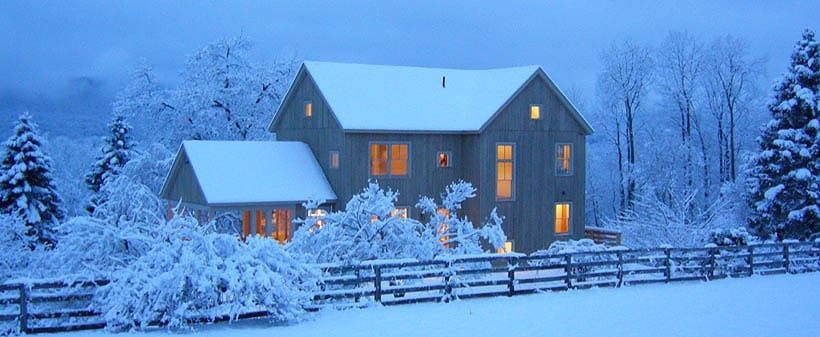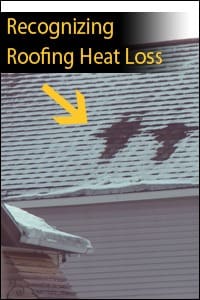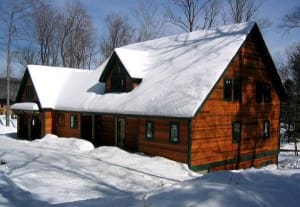
In the winter months, many homeowners throughout less temperate regions will experience snow and below freezing temperatures. And while you may find icicles on the side of a building to be a pleasant sign of the season, the formation of ice on the eaves of your home is a worrying sign of possible damage to your home. Icicles are a sign of an ice dam, which can be prevented with proper insulation or mitigated with temporary measures.


An ice dam forms when heat or hot air escaping from your house melts snow on the roof. Once the snow turns to water, it runs down your roof until it reaches the eaves. Since the eaves do not receive heat from the house like the rest of the roof, the water refreezes and forms an ice dam that prevents more water from flowing down the roof. Above the ice dam and at the heated section there is a pool of water created by melting water at the dam. With nowhere else to go, the ice dam will force water to seep back under shingles and through the roof. This can cause water damage within the home including mold and rot.

The solution to preventing ice dams is a properly insulated roof. Thankfully, with the structural insulated panels (SIPs) and rigid-foam insulation used in Timberpeg construction, the roof is well insulated and greatly minimizes the chance of ice dams. SIP roofs should be ventilated by creating an air channel on top of the SIP, what is commonly referred to as a cold roof. The Timberpeg homes in these photos all have a properly installed and ventilated cold roof so you don’t see any ice dams or icicles. Additionally, these forms of insulation are much more airtight than traditional batt or blown-in insulation, which eliminates gaps that can channel warm air towards the roof.

If you have an existing home that has issues with ice dams, then there are several steps you can take to remedy the problem. To fix the issue long term, you need to adequately insulate your home. If you have an attic space, this can be insulated with relative ease, and you should do so as soon as is practical. Additionally, make sure that your soffit and roof vents are clear of obstructions so that cool outside air can circulate in the attic space. If you are looking for a short-term fix, then using a roof rake to remove snow from the roof before it can melt is time-consuming but effective. You may also want to add a roof over any entry doors to avoid injuries from falling ice when the weather improves.You should not break icicles off of a roof, since this can be dangerous and does not eliminate ice dams. If nothing else works, you can use heat cables to melt the ice along the eaves, but it is very expensive to buy and run these heaters. Of course, one of the best long-term solutions is to build a timber frame home from Timberpeg. Then all you’ll need to do on snowy winter days is kick back and sip some cocoa (no roof rakes invited). If you have any questions on how SIPs can prevent ice dams and reduce energy costs, please contact Timberpeg to learn more.
